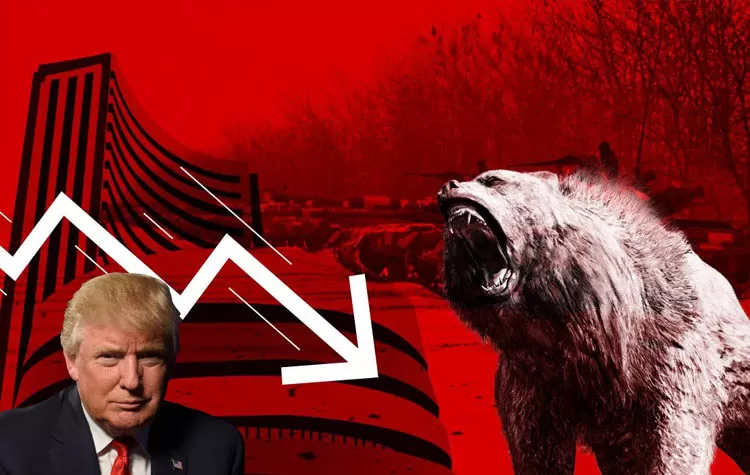
The U.S. stock market experienced severe losses for the third straight trading day, fueled by rising fears of newly imposed trade tariffs. The S&P 500 index lost 4.23% on Monday, its biggest fall since the spread of COVID-19. This drop officially put the index in bear market territory. The Dow Jones Industrial Average lost 1,400 points, and the Nasdaq, which is heavy on technology stocks, lost 700 points, or 4.55%.
Tariff Announcement Triggers Global Market Response
The market decline follows the announcement of new tariffs against major international trading partners by the previous President, Donald Trump. The policy announcement has caused unprecedented sell-offs globally, with extreme drops in Europe and Asia, as well as major downward pressures in India's markets. It is argued that these tariffs are likely to escalate inflation and heighten the danger of a recession, although the move has publicly been justified by Trump as one of strategic nature to safeguard the interests of locals.
Major Indices Bear Market Status Confirmed
With the Nasdaq already having dipped into bear market territory last Friday—declining over 22% from its recent high—the S&P 500 has now joined it. By definition, a decline of 20% or more from all-time highs puts an index into bear market territory. This is a significant turning point in investor sentiment, with fears of extended economic volatility starting to bear down on equity valuations.
Major Tech Stocks Suffer Heavy Losses
Top U.S. technology firms have been hit hard by the market's continued downtrend. Tesla shares dropped by 9%, and Nvidia had a 7% decline. Other big brands followed suit—Meta dropped 4.5%, Amazon dropped 4%, Netflix dropped 3.4%, Alphabet dropped 3%, and Apple dropped 6%. The losses being seen across the tech industry signify a wider erosion of investor confidence, particularly in high-growth stocks with high valuations.
Investor Sentiment Weakens Further
The extended sell-off in the stock market is being driven by growing unease with economic stability and the potential effect of protectionist trade practices. Market technicians are warning that continued turbulence can remain dominant if no accord is reached on global trade negotiations. As inflationary pressures are mounting, the Federal Reserve might also face more questions regarding its future policy moves.
Outlook Remains Uncertain as Market Pressures Mount
The prevailing market environment captures intense worries of disruptions in trade, inflation threats, and even recessionary tendencies. With the S&P 500 and the Nasdaq both technically in bear market territory, investors are preparing for ongoing uncertainty. The direction of the market will then hinge upon upcoming policy statements and global economic trends. For the meantime, financial markets can look forward to further volatility and relentless selling pressure.














